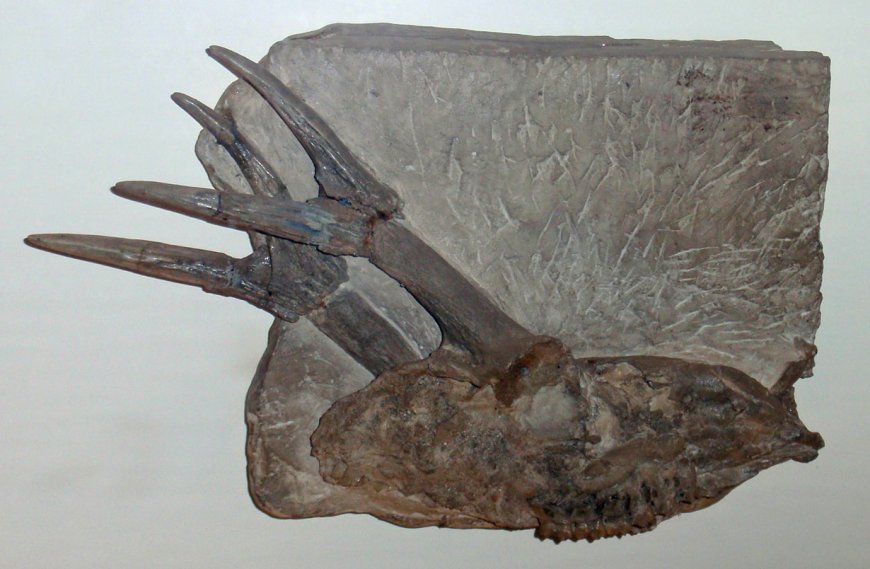Unearthing the Past: 5-Million-Year-Old Deer Fossils in Tennessee Reveal Ancient Ecosystems
Tennessee paleontologists uncover 5-million-year-old deer fossils, shedding light on ancient ecosystems. New AR technology lets the public explore the fossil site virtually.

Tennessee — A groundbreaking paleontological discovery in eastern Tennessee has captivated scientists and the public alike: a series of 5-million-year-old deer fossils preserved in remarkable condition. The find not only provides rare insights into prehistoric ecosystems but also highlights how emerging technologies such as augmented reality (AR) reconstruction are transforming the way researchers and the public interact with fossil evidence.
A Discovery Millions of Years in the Making
The fossils were unearthed during routine geological surveys in a sediment-rich valley, where layers of ancient deposits had remained undisturbed for millions of years. According to researchers, the specimens belong to an early deer species that roamed North America during the late Miocene to early Pliocene era.
“This is one of the most significant fossil discoveries in the region,” explained Dr. Alicia Turner, lead paleontologist on the project. “These deer were among the early forerunners of modern cervids, and their remains offer clues about migration patterns, diet, and how climate change influenced evolutionary paths.”
Insights into Ancient Ecosystems
The Tennessee fossils indicate that prehistoric deer likely thrived in warm, temperate woodlands with access to freshwater streams. Microscopic analysis of fossilized teeth reveals a diet rich in grasses and leafy plants, hinting at a mixed habitat of open meadows and dense forests.
“This evidence paints a clearer picture of how ecosystems in the American South evolved millions of years ago,” said Dr. Turner. “It also helps us understand how large herbivores interacted with predators and plant life during that period.”
Scientists suggest that studying these fossils could also shed light on climate-driven adaptations—offering parallels for today’s shifting environments.
Virtual Fossil Site: AR Brings Prehistory to Life
In a first-of-its-kind initiative, the excavation team has partnered with a U.S.-based tech firm to create a virtual reconstruction of the fossil site using AR technology. The interactive platform allows users to explore the dig virtually, rotate 3D scans of fossils, and view reconstructions of the ancient deer in their natural habitat.
“This project takes fossil interpretation beyond traditional museum displays,” explained project technologist Kevin Brooks. “It democratizes access, allowing classrooms, researchers, and the public to explore Tennessee’s prehistoric past from anywhere in the world.”
Such digital innovations are increasingly being used across paleontology and archaeology. The Smithsonian and other major U.S. research institutions are adopting similar approaches, ensuring discoveries are not confined to labs but accessible for education and cultural enrichment.
Regional and Global Scientific Importance
While North America has yielded various cervid fossils, the Tennessee find is notable for its age and preservation. Many of the skeletal remains were found nearly intact, providing rare opportunities for comparative anatomy studies.
According to experts at the American Museum of Natural History, these fossils could help refine evolutionary timelines for deer and other ungulates. They may even challenge long-standing theories about when and how deer species diversified across continents.
The discovery also ties into broader paleoclimate studies, giving scientists a window into how rising and falling global temperatures influenced species survival.
Public Engagement and Community Role
Beyond its scientific value, the excavation is expected to boost regional tourism and educational outreach. Tennessee state officials have expressed interest in showcasing the AR fossil site in local museums and visitor centers.
“Fossil discoveries like this not only deepen our understanding of history but also inspire young people to engage with science,” said community outreach coordinator Sarah Collins.
Grassroots initiatives are already underway, with schools incorporating the fossil project into their science curricula and local guides preparing eco-tours that highlight the region’s rich geological heritage.
The Bigger Picture: Fossils and the Climate Story
The Tennessee fossils remind us that ecosystems are never static. Five million years ago, climate shifts drove evolutionary changes that shaped today’s wildlife. Now, with modern warming trends, scientists warn that similar evolutionary pressures may be at play.
“The fossil record gives us a deep-time perspective,” Dr. Turner emphasized. “It shows us how species adapt—or fail to adapt—when their environments change.”
Conclusion
The unearthing of 5-million-year-old deer fossils in Tennessee is more than a paleontological milestone—it is a story of ecosystems, adaptation, and innovation. With AR technology opening new doors for exploration, the discovery bridges the gap between ancient history and modern science, inspiring future generations to keep digging deeper into the mysteries of Earth’s past.
What's Your Reaction?
 Like
0
Like
0
 Dislike
0
Dislike
0
 Love
0
Love
0
 Funny
0
Funny
0
 Angry
0
Angry
0
 Sad
0
Sad
0
 Wow
0
Wow
0








































































